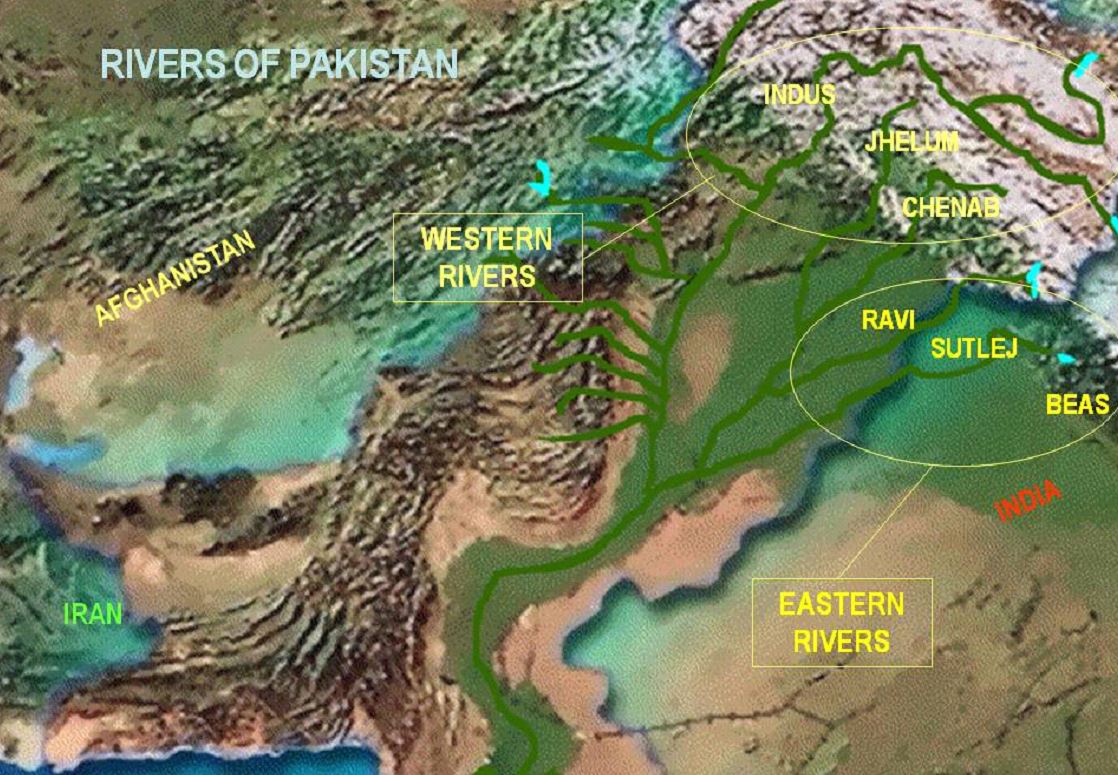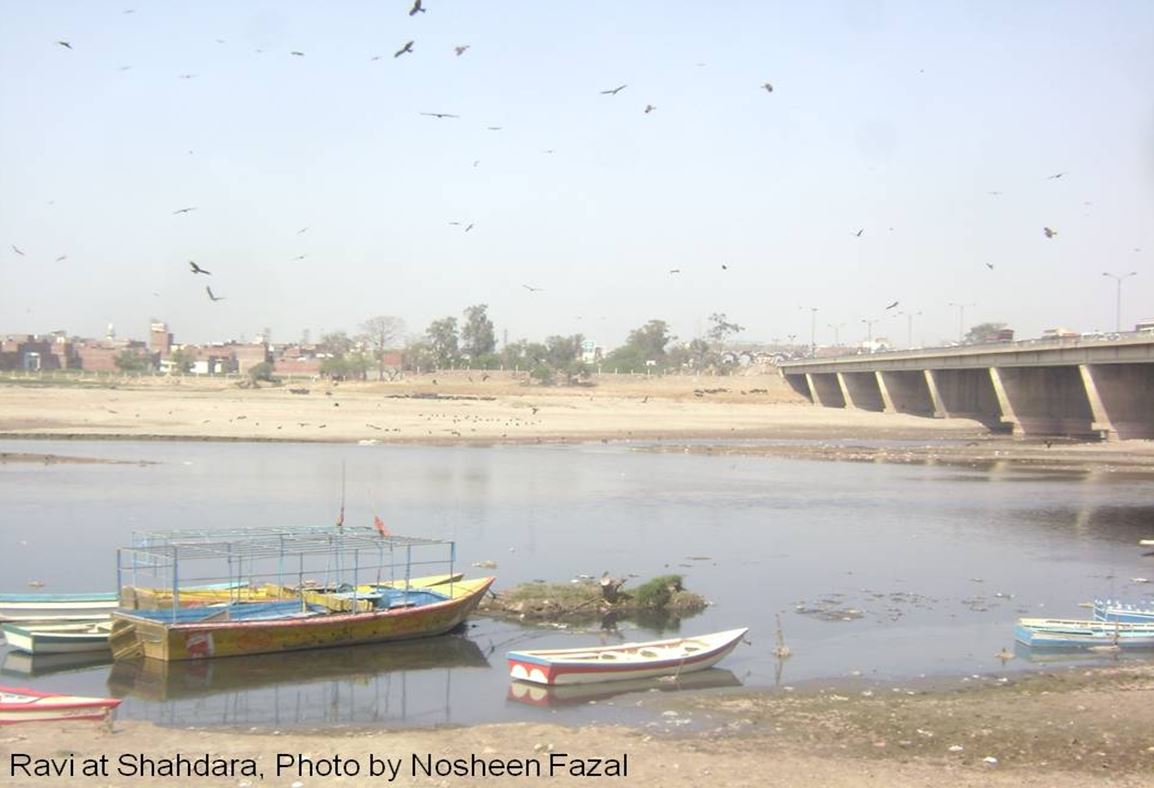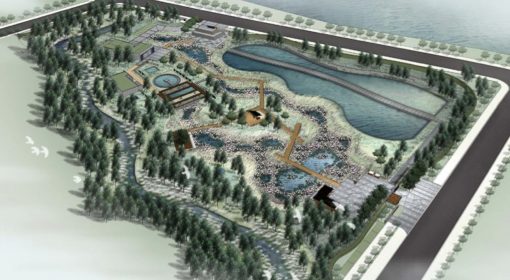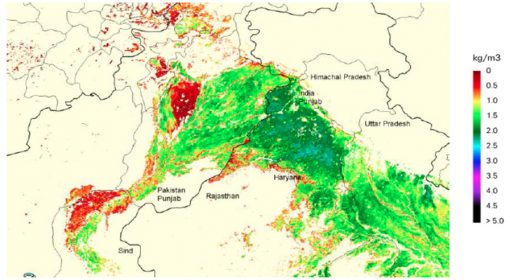by Nosheen Fazal, Deputy Director, Social and Environmental Management Unit, Punjab Irrigation and Drainage Authority (PIDA), Pakistan
August 18, 2014
Ravi is one of the rivers given to India through the Indus Water Treaty and is the smallest of the five main rivers of the Indus river system. It originates from the basin of Bangahal and drains in the southern slopes of Dhanladhar. After flowing through the Chamba valley in the northwest direction parallel to the Dhanladhar range, it leaves the Himalayas at Baseeli in India.
While in the mountainous area, the river flows for about 130 miles, dropping downslope 15,000 feet at about 115 feet per mile. After crossing the district of Gurdaspur, it enters Pakistan near Jassar about 120 km upstream of Lahore. It flows down for about 520 km and joins the River Chenab.
Downstream, the water is used mainly for agriculture. Diversion structures take the waters to irrigation canals.
It is alarming that the use of Ravi waters for irrigation has been found to be severely harmful for the soil as well as crops. Various studies highlight the accumulation of harmful heavy metals in crops irrigated with Ravi waters.
In Punjab province, Ravi is cruelly affected by the indiscriminate dumping of untreated municipal and industrial effluents. With extremely low flows in the winter, the river turns into a dirty drain due to the discharge of municipal sewage from Lahore city as well as industrial flows from industrial clusters at various locations like Kala Shah Kaku-Lahore Sheikhpura Road, Kot Lakhpat Industrial Estate and Multan Road. The Hudiara drain discharges maximum pollution load into the river (around 430 cusecs). According to an estimate the total daily discharge into river Ravi from point and non point pollution sources is 2000 cusecs per day.
The pollution increases as the river flows from Jassar to join river Chenab, its quality deteriorates tremendously and it receives greatest pollutant load from Hudiara drain and Deg Nullah from district Lahore. Due to seepage of surface water, pollutants have penetrated into the ground water which has also become severely
contaminated. In the areas where industrial drains are present the heavy metals like lead and nickel etc. have entered into the ground water and ultimately in the food chain.
Faecal pollution is also common in these areas. This has resulted in increased incidence of diseases like diarrhea, abdominal infections and skin disorders. During low flow or zero flow from India the river is literally reduced to a DRAIN.
Of Ravi’s total discharge of 28.08 m3/s, 23.43 m3/s is the municipal flow and 4.65 m3/s the industrial flow. The annual flow has gradually declined over years. Between 1922 and 1961 it was 7 million acre feet (MAF), thinning down to 5 MAF between 1985 to 1995 and further to 1.1 MAF between 2000 and 2009. Over 2009-10 it was 0.28 MAF. According to an international panel of experts, the flow should be a minimum 5000 cusecs per day and 25 MAF every five years.
The gradual reduction in Ravi’s flow over the past 20 years has brought about devastating effects on the river ecology (particularly the diversity of fish species), ground water quality, socio-economic status and the health of the communities settled along the banks.
The reduced volume of water in the river also leads to lowering of the water table in along the banks as there is no recharge with freshwater. Recharge with sewerage water, on the other hand, is very much detrimental for human beings, livestock and crops. (Currently water table in the Lahore city is almost 35 meters which is gradually reducing due to over pumping for domestic usage and lack of recharge from the river
water.)
- It is need of the hour that regular monitoring of Surface water and ground water is done by relevant agencies in order to study the trends in surface and groundwater pollution.
- Environmental laws relating to protection of water resources should be strictly implemented. Discharge of untreated domestic as well as industrial wastewater into the river Ravi should be strictly curbed
- The Environment Protection Agency (EPA) should strictly implement the National Environmental Quality Standards and force industries to install treatment plants. They should carry out random checks to monitor the regular working of the treatment plans.
- Public awareness campaigns should also be started in order to educate people about the role they can play in managing the problem.
{jcomments on}




